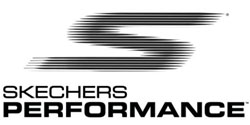CU News
News from the University of Colorado in Boulder.
New CU J-school is getting ready for the (digital) revolution
Feb 20th

“This symposium provides the CU community with an excellent opportunity to explore new political and cultural terrain opened up by digital media,” said symposium organizer Andrew Calabrese, a professor of journalism and mass communication. Among the speakers will be Columbia University Professor Todd Gitlin, who will present “Arab Spring and Occupy Wall Street: Why 2011 Was Not 1968” on Feb. 27 from 5:30 to 7 p.m. in room 150 of the Eaton Humanities Building. Gitlin’s upcoming e-book, “Occupy Nation: The Roots, the Spirit and the Promise of Occupy Wall Street,” looks at how that movement differs from the uprisings of previous eras. Mark Briggs, who coined the term “Journalism 2.0,” will talk about a new breed of ‘journopreneurs’ who are launching startups that break from traditional advertising models to find new sources of revenue for delivering news and information. Briggs is the director of digital media for KING-5 TV in Seattle and the Ford Fellow in Entrepreneurial Journalism at the Poynter Institute. His session is on Feb. 29 from 5:30 to 7 p.m. in room 150 of the Eaton Humanities Building.  Experts at the conference also will discuss new ways of archiving digital records and how these collections are being used in places such as libraries and museums. Librarians and archivists are looking for new ways to preserve such records, according to symposium organizers. The symposium runs in conjunction with an effort to create a new interdisciplinary school or college at CU-Boulder that may include studies in communication, technology, multimedia storytelling, commercial design and the digital arts and humanities. The effort is called the Information, Communication, Journalism, Media and Technology, or ICJMT, initiative. Journalism and Mass Communication is sponsoring the symposium in support of the ICJMT initiative, with additional support from CU’s Keller Center for the Study of the First Amendment, the Department of Political Science, the English department, the Film Studies Program, the Center for the Humanities and the Arts, CU Libraries and the Advertising A2B certificate program. For more information including speakers and event locations visit http://www.icjmtsymposium.org/.
Experts at the conference also will discuss new ways of archiving digital records and how these collections are being used in places such as libraries and museums. Librarians and archivists are looking for new ways to preserve such records, according to symposium organizers. The symposium runs in conjunction with an effort to create a new interdisciplinary school or college at CU-Boulder that may include studies in communication, technology, multimedia storytelling, commercial design and the digital arts and humanities. The effort is called the Information, Communication, Journalism, Media and Technology, or ICJMT, initiative. Journalism and Mass Communication is sponsoring the symposium in support of the ICJMT initiative, with additional support from CU’s Keller Center for the Study of the First Amendment, the Department of Political Science, the English department, the Film Studies Program, the Center for the Humanities and the Arts, CU Libraries and the Advertising A2B certificate program. For more information including speakers and event locations visit http://www.icjmtsymposium.org/.
CU: The Brazilians are coming! (to study science)
Feb 17th
undergraduates study at CU-Boulder
100,000 Brazilian students, fully funded by Brazil’s booming economy, want to share knowledge
The University of Colorado Boulder welcomed 19 students from Brazil this semester as part of the new Science Without Borders Program and Brazil’s initiative to place and fully fund outstanding students abroad to supplement their studies in science, technology, engineering and mathematics, or STEM.
The students are among approximately 650 Brazilian undergraduates who have been selected to study on U.S. campuses with funding for their tuition, fees and housing from the Brazilian government’s Science Without Borders Program. The program, announced last year, provides scholarships to Brazilian undergraduate students for one year of study at one of more than 100 host colleges and universities, including CU-Boulder. Scholarships are given primarily to students in the STEM fields. After two semesters and an on- or off-campus internship, the students will return to Brazil to complete their degrees.

“Science Without Borders interested me because I wanted to know what it was like to study and live on campus and to learn in a different environment,” said Victor Sabioni, an aerospace engineering student from the Universidade de Federal de minas Gerais in Belo Horizonte. “I am taking two classes that are not offered at home, and everything is great so far.
“The campus is amazingly beautiful and everyone has been so welcoming and polite. CU couldn’t be better. It’s like heaven with homework.”
The Science Without Borders Program at CU-Boulder is offered through a partnership between the College of Arts and Sciences, the College of Engineering and Applied Science and the Division of Continuing Education.
“The students are studying with their peers, living in university housing and experiencing life in Colorado and the U.S.,” said Anne Heinz, dean of Continuing Education and associate vice chancellor for outreach and engagement. “Several of the students already have indicated an interest in returning to CU-Boulder for graduate school.
“CU-Boulder students, whether they’re from the San Luis Valley, San Francisco or São Paulo, will benefit from the enriched classroom conversations and experiences enabled by these programs,” she said. “These collaborations foster our future as a global society, and we look forward to CU-Boulder’s continued participation in this program.”

An additional cohort of students is scheduled to arrive later this year for programs beginning in the summer and fall.
The Science Without Borders Program is part of a larger Brazilian government initiative to grant 100,000 scholarships to Brazil’s best students to study abroad at the world’s best universities. The program is sponsored by the scholarship foundation of Brazil’s Ministry of Education, Coordenação de Aperfeiçoamento de Pessoal de Nível Superior. The program is administered by the Institute of International Education, an independent nonprofit specializing in international exchange. The institute has been working closely with the ministry and with CU-Boulder and other U.S. universities to place the students in study programs that best meet their academic needs.
“We are pleased to be partnering with the government of Brazil and with the U.S. host campuses to implement this important program,” said Allan E. Goodman, Institute of International Education president and CEO. “At a time when Brazil’s economy is expanding rapidly, and Brazil and the United States are forging unprecedented ties in trade, energy and scientific development, we look to higher education as another area where our two countries should seek much stronger cooperation.”
CU students reach big carbon neutrality goal
Feb 16th
FACILITIES REACH CARBON NEUTRALITY
The University of Colorado Student Government has reduced the net emissions of greenhouse gases, or GHGs, from its student-run facilities to zero after committing in 2007 to reach carbon neutrality.
CUSG operates three large CU-Boulder facilities including the University Memorial Center, Student Recreation Center and Wardenburg Health Center.
“We are very proud of this accomplishment,” said CUSG Vice President Carly Robinson. “It’s a reflection of our sustainability-minded campus community and the impressive resources we have on hand to be more environmentally friendly, and even save money, by implementing green strategies.”
CU-Boulder students will gather for a “Getting to Carbon Neutrality” forum on Friday, Feb. 17, from 10 a.m. to 2 p.m. in the Aspen Room of the University Memorial Center. They will discuss the campus’s carbon neutrality achievements and remaining challenges with input from a panel of CU staff. The event is open to CU students but requires pre-registration at http://ecenter.colorado.edu/carbonneutrality.

More than 9,000 metric tons of GHG emissions attributed to operating the student-run buildings have been eliminated through renewable energy generation, energy conservation measures and carbon-offset strategies implemented by CUSG. Carbon neutrality was reached even as square footage and usage of the facilities increased in recent years.
CUSG partnered with Facilities Management to install additional solar panels on CU facilities that contribute roughly 72,000 kilowatt-hours of energy per month to the electricity grid — enough to power about 80 houses. This renewable energy generation replaces a portion of the energy generated by traditional systems that emit GHGs.
CUSG buildings also have been renovated with better insulation and sealing technologies, more efficient lighting and windows. These upgrades reduced the buildings’ total energy consumption by nearly 15 percent over the last five years.
CUSG also has worked with Colorado communities on carbon reduction projects as a way to offset GHG emissions from CUSG buildings. The projects provide educational, economic development and social equity benefits for the state.
One of the projects includes solar thermal system installations, used to heat water, for low-income housing in Loveland, Colo.
Two years ago, the CUSG helped support the installation of a system that converts methane gas from the Larimer County Landfill in Fort Collins, Colo., into energy. Methane gas is a potent GHG emission.
Recently, CUSG contracted with Native Energy — a carbon offsets program provider — to support a novel kiln system used by Commercial Brick Corp., an Oklahoma brick manufacturer. The kiln system is powered by methane gas captured from a nearby landfill. It prevents methane emissions and replaces fossil fuel use. The company, which will participate in the Feb. 17 forum, provides 200 jobs and produces 144 million bricks per year sold in 15 states.
The CU Environmental Center coordinated the carbon neutrality effort. The center administers grants and loan programs within CUSG facilities that have helped fund energy conservation projects, delivering over $1.6 million in energy cost savings for CUSG over the last five years while driving down GHG emissions.





















